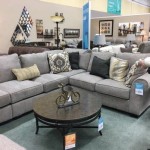Art Deco Antique Bedroom Furniture: A Legacy of Glamour and Geometric Design
Art Deco, an influential visual arts and design style, emerged in France during the 1920s and flourished internationally throughout the 1930s and 1940s. The style represents a synthesis of diverse influences, including Art Nouveau, Cubism, Bauhaus, and Egyptian and Aztec motifs. Art Deco emphasized streamlined forms, geometric patterns, luxurious materials, and vibrant colors. This aesthetic translated beautifully into furniture design, imbuing bedrooms with an air of sophistication and modernity. Antique Art Deco bedroom furniture remains highly sought after by collectors and design enthusiasts, representing a tangible connection to a bygone era of glamour and innovation.
The design characteristics of Art Deco furniture stand in stark contrast to the preceding Art Nouveau movement, which favored organic, flowing lines. Art Deco embraced symmetry, repetition, and bold geometric shapes. The movement was highly influenced by the discovery of Tutankhamun's tomb in 1922, which sparked an interest in Egyptian designs. This interest is reflected in the many Art Deco pieces that incorporate stylized depictions of lotus flowers, scarabs, and other Egyptian motifs. The movement's fascination with technology and the machine age also manifested in the use of streamlined forms and architectural details in furniture design. The result was a style that was both elegant and modern, reflecting the optimism and energy of the interwar period.
Antique Art Deco bedroom furniture encompasses a wide range of pieces, including beds, dressers, nightstands, vanities, and armoires. These pieces are often crafted from luxurious materials such as exotic wood veneers, including Macassar ebony, burled walnut, and bird's-eye maple. These woods were prized for their rich colors and striking grain patterns. Metal accents, such as chrome, brass, and nickel, were also frequently incorporated into the design, adding a touch of industrial chic. Upholstery materials included velvet, silk, and leather, often in bold colors or geometric patterns. The overall effect was one of opulence and sophistication, creating a luxurious and inviting bedroom environment.
Key Characteristics: Materials and Construction
The selection of materials played a critical role in defining the Art Deco aesthetic for bedroom furniture. High-quality woods were a cornerstone, with exotic veneers taking center stage. Macassar ebony, with its striking black and brown stripes, was a favorite for creating dramatic contrasts. Burled walnut, known for its intricate swirling patterns, added a touch of organic texture. Bird's-eye maple, characterized by its small, eye-shaped figures, offered a more subtle yet equally appealing visual interest. These veneers were often applied to solid wood frames, providing both structural integrity and a canvas for showcasing the wood's natural beauty.
Metal accents were another defining feature. Chrome, with its sleek and reflective surface, was commonly used for hardware, legs, and decorative trim. Brass, with its warm and golden hue, provided a richer and more luxurious alternative. Nickel, similar in appearance to chrome but with a slightly softer sheen, offered a more understated elegance. These metals were often polished to a high shine, reflecting light and adding to the overall sense of glamour. The construction of Art Deco furniture prioritized quality and durability. Dovetail joints, mortise-and-tenon joints, and other time-tested techniques were used to ensure that pieces would last for generations. Attention to detail was paramount, with every aspect of the furniture carefully considered, from the placement of the veneers to the finishing of the metal hardware.
Upholstery materials also contributed to the luxurious feel of Art Deco bedroom furniture. Velvet, with its soft and plush texture, was a popular choice for headboards, chairs, and benches. Silk, known for its smooth and lustrous surface, added a touch of elegance. Leather, particularly embossed or tooled leather, provided a more masculine and sophisticated look. Fabrics were often chosen in bold colors, such as emerald green, sapphire blue, and ruby red, reflecting the era's vibrant energy. Geometric patterns, such as chevrons, zigzags, and stylized floral motifs, were also common, adding visual interest and reinforcing the Art Deco aesthetic.
Key Design Elements: Geometric Forms and Streamlined Shapes
Geometric forms were a fundamental element of Art Deco design, permeating every aspect of bedroom furniture. Straight lines, sharp angles, and symmetrical compositions were favored over the flowing curves of Art Nouveau. Rectangles, squares, and triangles were frequently incorporated into the overall shape of furniture pieces, creating a sense of order and balance. These geometric forms were often repeated in decorative details, such as carved panels, inlaid marquetry, and metal accents. The emphasis on geometry was not merely aesthetic; it also reflected the era's fascination with technology and the machine age.
Streamlined shapes were another hallmark of Art Deco furniture. This emphasis on streamlining was influenced by the burgeoning fields of aviation and automotive design. Furniture pieces were designed to appear sleek and aerodynamic, with smooth surfaces and minimal ornamentation. Rounded corners and gently sloping lines were often used to soften the overall geometric forms, creating a sense of fluidity and movement. This approach was particularly evident in the design of dressers, nightstands, and vanities, which often featured curved fronts and integrated handles.
The use of stepped forms and ziggurat motifs was also common in Art Deco bedroom furniture. Stepped forms, reminiscent of ancient ziggurats, added a sense of depth and dimension to furniture pieces. These stepped forms were often created by layering different materials or by carving geometric patterns into the surface of the wood. Ziggurat motifs, stylized representations of stepped pyramids, were frequently incorporated into decorative details, such as headboards, mirrors, and lamps. These motifs evoked a sense of grandeur and sophistication, reflecting the era's fascination with ancient civilizations.
Identifying and Caring for Antique Art Deco Bedroom Furniture
Identifying authentic Art Deco bedroom furniture requires a keen eye and a familiarity with the style's key characteristics. Look for the use of high-quality materials, such as exotic wood veneers and polished metal accents. Examine the construction for evidence of traditional woodworking techniques, such as dovetail joints and mortise-and-tenon joints. Pay attention to the overall design, noting the presence of geometric forms, streamlined shapes, and decorative motifs. Research specific furniture makers and designers associated with the Art Deco movement to gain a better understanding of their style and techniques.
Condition is a critical factor when assessing the value of antique Art Deco bedroom furniture. Look for signs of wear and tear, such as scratches, dents, and fading. Check for structural damage, such as loose joints or warped panels. Examine the upholstery for stains, tears, and fading. Keep in mind that some degree of wear and tear is to be expected in antique furniture, but excessive damage can significantly reduce its value. Professional restoration can often improve the condition of antique furniture, but it is important to choose a reputable restorer who specializes in Art Deco pieces.
Proper care and maintenance are essential for preserving the beauty and value of antique Art Deco bedroom furniture. Dust furniture regularly with a soft cloth to remove surface dirt and grime. Avoid using harsh cleaning chemicals or abrasive materials, as these can damage the finish. Polish wood surfaces with a high-quality furniture polish to protect the finish and enhance its luster. Protect furniture from direct sunlight and extreme temperatures, as these can cause fading and warping. Upholstered pieces should be professionally cleaned on a regular basis to remove stains and prevent the buildup of dirt and allergens. Store furniture in a climate-controlled environment to prevent damage from humidity and temperature fluctuations.
By understanding the key characteristics, design elements, and care requirements of antique Art Deco bedroom furniture, collectors and enthusiasts can appreciate the enduring beauty and historical significance of these iconic pieces. The style continues to influence contemporary design, demonstrating its timeless appeal and its ability to transform any bedroom into a sanctuary of elegance and sophistication.

Art Deco Bedroom Suite The Cathy Set Etsy

Italian Art Deco Antique 4 Pc Burl Bedroom Set King Size Bed 50767

Art Deco Birch And Walnut Burl Bedroom Set By Osvaldo Borsani 1930s Of 4

Art Deco Vintage 5 Pc Waterfall Walnut Queen Bedroom Set

Vintage Art Deco Bedroom Suite Peppermill Interiors

Antique English Art Deco Burr Walnut 5 Piece Bedroom Suite 2 Wardrobes Dressing Table Bedside Tables 5ft Headboard Circa 1930 Etsy

1920s Italian Art Deco Bedroom Suite With Cherub Etsy

Art Deco Waterfall 4 Pc Bedroom Set Full Size Bed Lenoir 50119

Vintage Art Deco Hand Carved Oak Dressing Table With Mirror 1970s

Antique English Art Deco Oak Marquetry Bedroom Suite Attributed To Gaylayde








